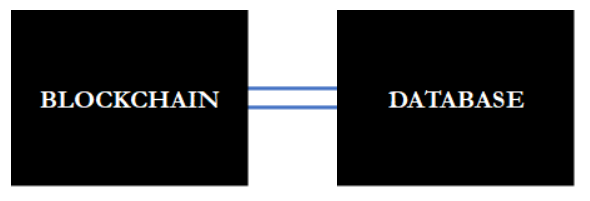
Blockchain is a distributed database that stores information electronically in digital form. As the name implies, blockchain collects information together in groups, or called blocks. Blocks have a certain storage capacity and when fully filled, it is closed and linked to previously filled blocks, forming a chain of data known as blockchain. Each block in the chain is given an exact timestamp when it is added to the chain, making it irreversible when implemented in a decentralised nature. Decentralised blockchains are immutable, meaning that the data entered cannot be altered unless a majority of the network has reached a consensus to do so. The goal of blockchain is to allow digital information to be recorded and distributed, but not edited.

- Blockchain is the foundation for immutable ledgers, or records of transactions that cannot be altered, deleted, or destroyed.
- A blockchain is essentially a digital ledger of transactions that is duplicated and distributed across the entire network of computer systems on the blockchain.
- Each block in the chain contains a number of transactions, and every time a new transaction occurs on the blockchain, a record of that transaction is added to every participant’s ledger.
There are several key steps a transaction must go through before it is added to the blockchain:
Authentication
This is done using cryptographic keys, a string of data (like a password) that identifies a user and gives access to their “account” or “wallet” of value on the system. Each user has their own private key and a public key that everyone can see. Using them both creates a secure digital identity to authenticate the user via digital signatures and to ‘unlock’ the transaction they want to perform.
Authorisation
Once the transaction is agreed between the users, it needs to be approved, or authorised, before it is added to a block in the chain. For a public blockchain, the decision to add a transaction to the chain is made by consensus. This means that the majority of “nodes” (or computers in the network) must agree that the transaction is valid. The people who own the computers in the network are incentivised to verify transactions through rewards. This process is known as ‘proof of work’.
Proof of Work:
Proof of Work requires the people who own the computers in the network to solve a complex mathematical problem to be able to add a block to the chain. Solving the problem is known as mining, and ‘miners’ are usually rewarded for their work in cryptocurrency.
[Mining isn’t easy. The mathematical problem can only be solved by trial and error and the odds of solving the problem are about 1 in 5.9 trillion. It requires substantial computing power which uses considerable amounts of energy. This means the rewards for undertaking the mining must outweigh the cost of the computers and the electricity cost of running them, as one computer alone would take years to find a solution to the mathematical problem.]
Proof of Stake:
Later blockchain networks have adopted “Proof of Stake” validation consensus protocols, where participants must have a stake in the blockchain – usually by owning some of the cryptocurrency – to be in with a chance of selecting, verifying & validating transactions.
Use Cases of Blockchain
Healthcare
Healthcare providers can leverage blockchain to securely store their patients’ medical records. When a medical record is generated and signed, it can be written into the blockchain, which provides patients with the proof and confidence that the record cannot be changed. These personal health records could be encoded and stored on the blockchain with a private key, so that they are only accessible by certain individuals, thereby ensuring privacy.
Smart Contracts
A smart contract is a computer code that can be built into the blockchain to facilitate, verify, or negotiate a contract agreement. Smart contracts operate under a set of conditions to which users agree. When those conditions are met, the terms of the agreement are automatically carried out.
Banking & Finance
Implementation of blockchain technology into the banking and finance industry can:
- Process cheque transactions faster, 24/7.
- Allow exchange of funds more quickly and securely.
- Shorten the settlement and clearing process in stock trading.
- Reduce the risk of holding the money in transit for days.
Supply Chain
Suppliers can use blockchain to record the origins of materials that they have purchased. For example, IBM has created its Food Trust blockchain to trace the journey that food products take to get to their locations. The food industry has seen countless outbreaks, as well as hazardous materials being accidentally introduced to foods. In the past, it has taken weeks to find the source of these outbreaks or the cause of sickness from what people are eating. Using blockchain gives brands the ability to track a food product’s route from its origin, through each stop it makes, and finally, its delivery.
If a food is found to be contaminated, then it can be traced all the way back through each stop to its origin. Not only that, but these companies can also now see everything else it may have come in contact with, allowing the identification of the problem to occur far sooner and potentially saving lives.
Voting
The nature of blockchain’s immutability means that fraudulent voting would become far more difficult to occur. A voting system could work such that each citizen of a country would be issued a single cryptocurrency or token. Each candidate would then be given a specific wallet address, and the voters would send their token or crypto to the address of whichever candidate for whom they wish to vote. The transparent and traceable nature of blockchain would eliminate both the need for human vote counting and the ability of bad actors to tamper with physical ballots.
What do you think? Let us know in the comments section below!

Recent Comments